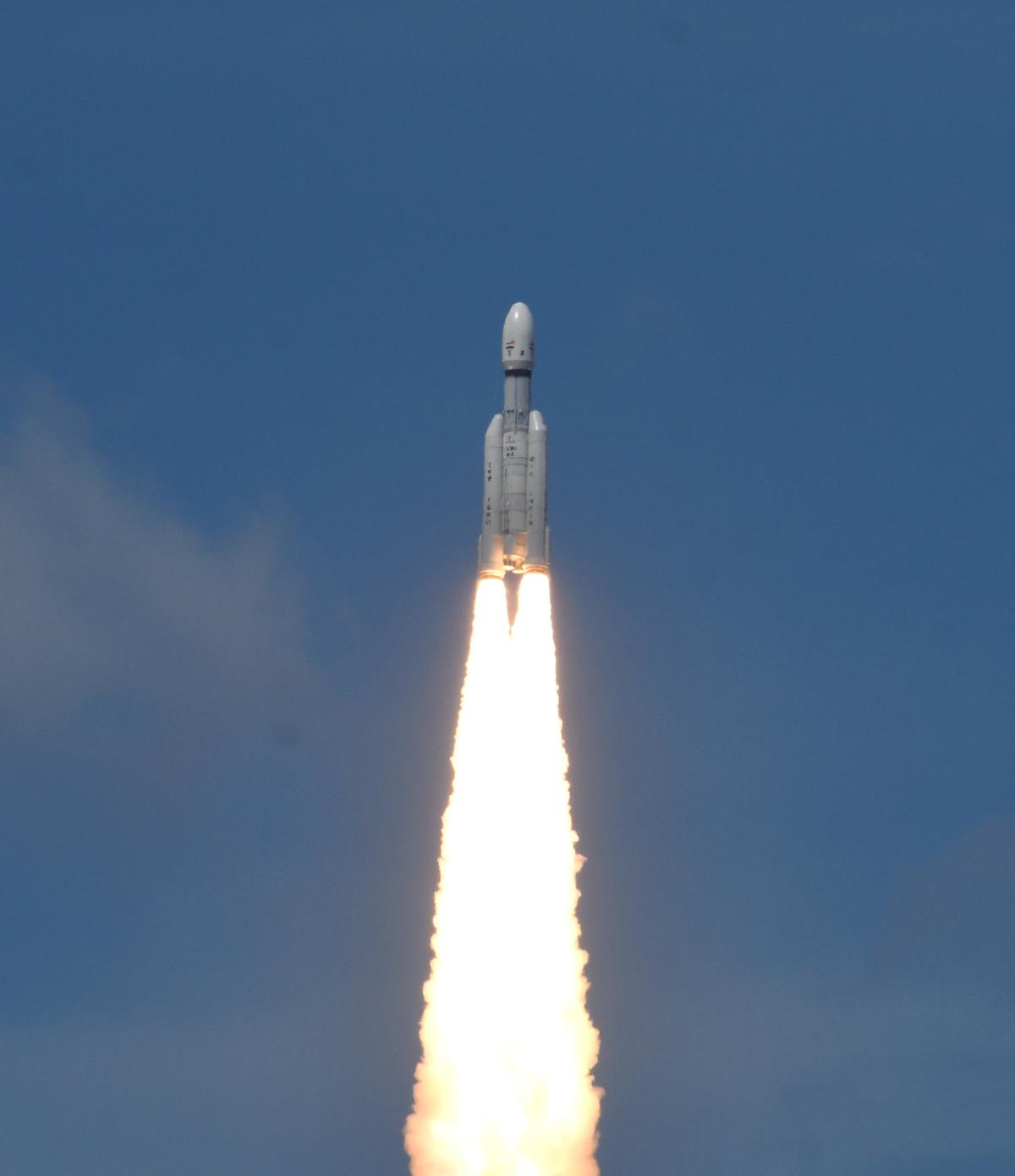India's third lunar mission, Chandrayaan-3, achieved a successful launch from the Satish Dhawan Space Centre in Sriharikota at 2.35 pm on July 14. The spacecraft was carried onboard a Launch Vehicle Mark-3 (LVM-3) rocket, lifting off from the second launch pad.
This mission represents India's second endeavor to softly land robotic instruments on the lunar surface, following the unsuccessful attempt of Chandrayaan-2 in 2019. Currently, only three countries, the United States, Russia, and China, have achieved successful soft landings on the moon.
Following the triumphant launch, ISRO Chairman S. Somanath addressed the press, emphasizing the significance of the upcoming 42 days. He outlined the planned trajectory, including five earth-bound manoeuvers until July 31, trans-lunar insertion on August 1, lunar capture, separation of the propulsion module and lander module on August 17, and the planned landing at 5.47 pm IST on August 23, if all goes according to plan.
Prime Minister Narendra Modi lauded the momentous achievement of Chandrayaan-3, stating that it marks a new chapter in India's space journey and inspires the dreams and ambitions of every Indian. He commended the relentless dedication, spirit, and ingenuity of the ISRO scientists. Minister of State Jitendra Singh, present during the launch, expressed pride in India's accomplishment and recognized it as a vindication of Vikram Sarabhai's dream six decades ago.
Approximately 16 minutes after the LVM-3's liftoff, the spacecraft separated from the rocket. It consisted of an integrated module containing the propulsion module, lander module, and rover. It entered an elliptic parking orbit (EPO), with its closest approach to Earth at around 170 km and the farthest at 36,500 km.
Chandrayaan-3 comprises an indigenous propulsion module (PM) and lander module (LM) and aims to develop and demonstrate new technologies necessary for inter-planetary missions. The PM will transport the lander, which carries the rover, from the EPO to a circular orbit around the moon at an altitude of 100 km. The PM also houses the "Spectro-polarimetry of Habitable Planetary Earth" (SHAPE) instrument, designed to study spectral emissions from Earth.
ISRO states that the lander has the capability to softly land at a designated lunar site and deploy the rover, which will conduct in-situ chemical studies of the lunar surface during its movement. The lander is also equipped with scientific instruments to investigate the lunar surface and subsurface.
Over the next month, the propulsion module will execute a series of maneuvers to propel itself towards the moon and be captured by the moon's gravity upon arrival in lunar orbit. Once captured, the lander will detach itself and attempt a soft landing on the moon's surface.
The Chandrayaan-3 mission aims to develop and showcase new technologies essential for inter-planetary missions, marking another step forward in India's pursuit of space exploration.
.jpg)
No comments:
Post a Comment